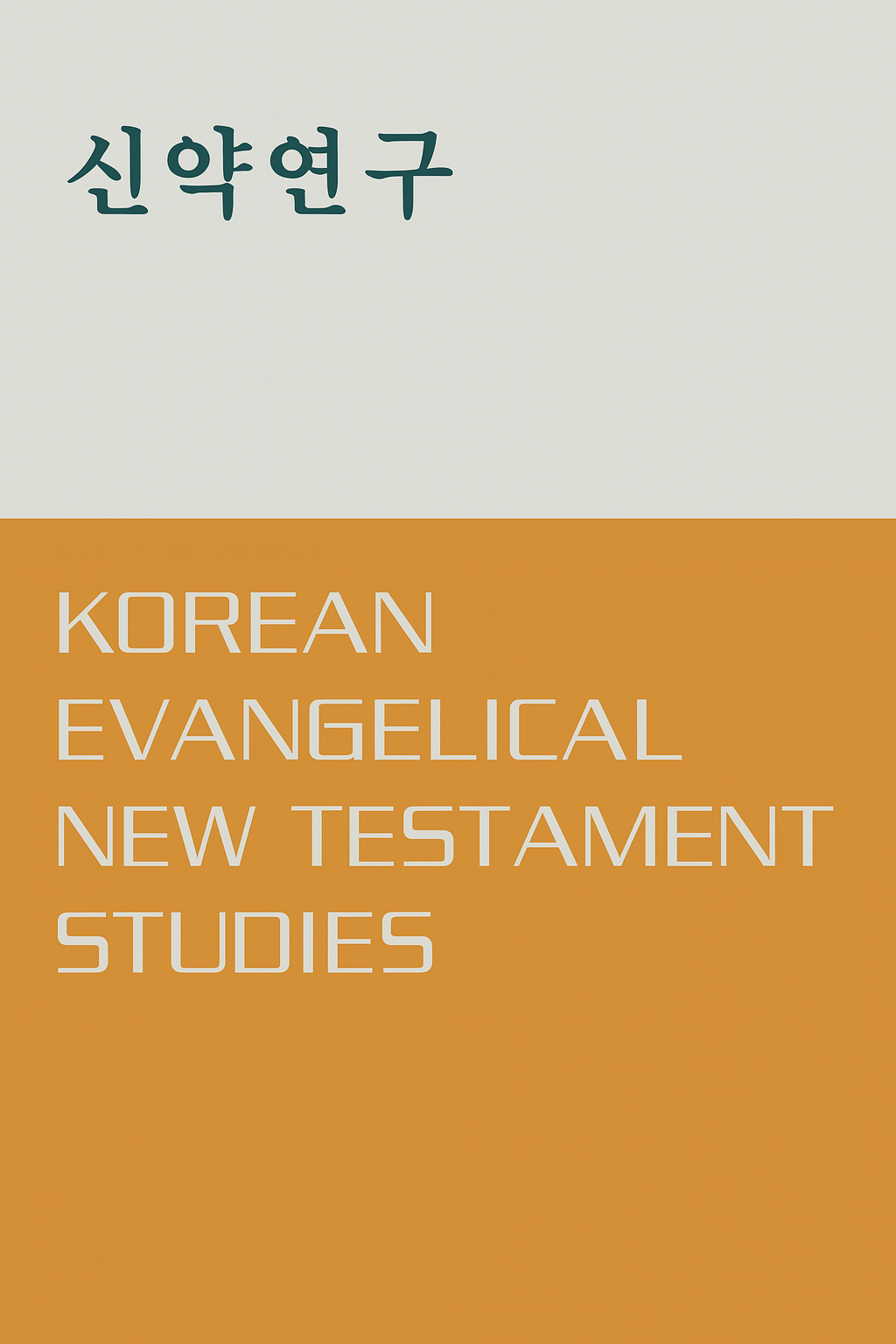Bilingual Origins of New Testament Christology - Criticisms against Linguistic Presuppositions of Religionsgeschichtliche Schule - Sang-Il Lee (Chongshin University) The ‘New Testament Christology’ is a study that concerns how Jesus became God among his early followers. The New Testament Christology has been vividly debated by three positions. First, the scholars of the old religionsgeschichtliche Schule, started with Ferdinand Baur since 1845, have suggested that Jesus was merely regarded as a man in the Jewish setting and the designated titles in Aramaic refer to a man. Later, Jesus became God among Gentile Christians who spoke Greek. The christological titles were developed from a man(low christological titles) into a God(high christological titles). Martin Hengel who shared the view of new religionsgeschichtliche Schule, persisted that Judaism in the first-century Judaeo-Palestine was as Hellenized as the first-century Diaspora regions. Greek was also spoken in the first-century Judaeo-Palestine. Hence, the christological terminologies were formed in the earliest church in Jerusalem; earlier than old religionsgeschichtliche Schule had thought. Following Martin Hengel, scholars of the Early High Christology Hypothesis have recently attracted attention. They (including Larry Hurtado) suggested that we should take early high christology among early Christians into serious consideration. The three positions have dealt with New Testament Christology on the basis of the linguistic milieus of the earliest Christians. The old religionsgeschichtliche Schule, first of all, supposed that Aramaic was used in Judaeo-Palestine in the first century AD whereas Greek was used in the Hellenized regions of the Near East. That, Aramaic christological titles were developed among Jews in Judaeo-Palestine, whereas Greek christological titles were developed among Gentiles in Hellenistic cities. As a result, the christological titles were developed from low christological titles in Aramaic into high christological titles in Greek. Although Hengel considers that the linguistic milieu of first-century Judaeo-Palestine was bilingual, he did not apply the bilingualism to New Testament Christology in consistency. He could correct some faults of the old religionsgeschichtliche Schule, but he still followed their pattern. The scholars of Early High Christology are the same. Recent archaeological excavations, however, show that the linguistic milieu of first-century Judaeo-Palestine was bilingual in Aramaic and Greek. Three evidence can be suggested. First, the inscriptions in Jerusalem in Greek was 52%. Second, writings found in cities as well as in rural areas were Greek. Finally, linguistic-geographical evidence confirms the bilingualism of first-century Judaeo-Palestine. There were numerous Greek cities in Judaeo-Palestine. This implies that Greek was used among the residents who were rich as well as poor in cities and near rural areas. The bilingual situation of the first-century Judaeo-Palestine implies that Jesus traditions were circulated in Aramaic as well as in Greek in Judaeo-Palestine during Jesus’ ministry. The bilingual circulation of Jesus traditions from Jesus’ ministry implies that christological titles were also used in Aramaic as well as in Greek. The old religionsgeschichtliche Schule suggested that Aramaic christological titles were used among Aramaic-speaking Christians in Judaeo-Palestine, whereas Greek christological titles were used among Greek-speaking Christians in Hellenistic cities. If we take bilingualism of first-century Judaeo-Palestine into serious consideration, it can be admitted that both Aramaic christological titles and Greek christological titles were already used simultaneously in Judaeo-Palestine. Although the new religionsgeschichtliche Schule including Hengel and Hurtado accepted the bilingualism of first-century Judaeo-Palestine, they did not apply the bilingualism to New Testament Christology in consistency, which is their weak point. It seems that if they accept the bilingual christology, their argument would be stronger.
'신약 기독론'은 초기 예수 추종자들 사이에서 어떻게 예수가 하나님으로 여겨지게 되었는지를 다루는 학문입니다. 신약 기독론은 세 가지 입장에 의해 활발하게 논의되어 왔다. 첫째, 1845년 페르디난트 바우어(Ferdinand Baur)로부터 시작된 구(舊) 종교사학파 학자들은, 예수가 유대적 배경 속에서는 단지 인간으로 간주되었고 아람어로 된 칭호들은 인간을 지칭하는 것이었다고 제안했다. 이후 예수는 그리스어를 사용하는 이방인 기독교인들 사이에서 하나님이 되었다는 것입니다. 즉, 기독론적 칭호는 인간(낮은 기독론)에서 하나님(높은 기독론)으로 발전했다는 입장이다. 마르틴 헹엘(Martin Hengel)은 신(新) 종교사학파의 견해를 공유하며, 1세기 유대-팔레스타인 지역의 유대교가 1세기 디아스포라 지역만큼이나 헬라화되었다고 주장했다. 1세기 유대-팔레스타인에서도 그리스어가 사용되었다는 것이다. 따라서 기독론적 용어들은 구 종교사학파가 생각했던 것보다 더 이른 시기인 예루살렘의 가장 초기 교회에서 형성되었. 마르틴 헹의 뒤를 이어, 최근에는 '초기 고층 기독론 가설'(Early High Christology Hypothesis) 학자들이 주목받고 있다. 그들(래리 허타도(Larry Hurtado) 포함)은 초기 기독교인들 사이에 나타난 초기 고층 기독론을 진지하게 고려해야 한다고 제안했다. 이 세 가지 입장은 모두 초기 기독교인들의 언어 환경을 기초로 신약 기독론을 다루어 왔다. 구 종교사학파는 1세기 유대-팔레스타인에서는 아람어가, 근동의 헬라화된 지역에서는 그리스어가 사용되었다고 가정다. 그 결과, 아람어로 된 낮은 기독론 칭호가 그리스어로 된 높은 기독론 칭호로 발전했다고 보았다. 비록 헹은 1세기 유대-팔레스타인의 언어 환경이 이중언어적(bilingual)이었다고 생각했지만, 그는 이 이중언어 사용을 신약 기독론에 일관되게 적용하지는 않았다. 그는 구 종교사학파의 일부 오류를 수정할 수는 있었지만, 여전히 그들의 패턴을 따랐다. 초기 고층 기독론 학자들도 마찬가지이다. 그러나 최근의 고고학적 발굴은 1세기 유대-팔레스타인의 언어 환경이 아람어와 그리스어의 이중언어 환경이었음을 보여줍니다. 다음 세 가지 증거를 제시할 수 있다. 1. 예루살렘에서 발견된 명문(銘文) 중 **52%**가 그리스어로 되어 있었다. 2. 도시뿐만 아니라 시골 지역에서 발견된 문서들도 그리스어로 작성되었다. 3. 언어-지리적 증거 역시 1세기 유대-팔레스타인의 이중언어 사용을 확증다. 유대-팔레스타인에는 수많은 그리스 도시들이 있었다. 이는 그리스어가 도시와 인근 농촌 지역의 부유층뿐만 아니라 빈곤층 주민들 사이에서도 사용되었음을 의미한다. 1세기 유대-팔레스타인의 이중언어 상황은 예수 전승이 예수의 사역 기간 동안 유대-팔레스타인 내에서 아람어뿐만 아니라 그리스어로도 유포되었음을 시사한다. 이러한 예수 전승의 이중언어적 유포는 기독론적 칭호 또한 아람어와 그리스어로 동시에 사용되었음을 의미한다. 구 종교사학파는 아람어권과 그리스어권 기독교인들이 각각 다른 언어의 칭호를 사용했다고 보았지만, 이중언어 환경을 진지하게 고려한다면 두 언어의 칭호가 처음부터 함께 사용되었음을 인정할 수 있다. 헹엘 허타도를 포함한 신 종교사학파는 1세기 유대-팔레스타인의 이중언어 사용을 받아들였음에도, 이를 신약 기독론에 일관되게 적용하지 않았다는 약점을 가진다. 만약 그들이 이중언어적 기독론을 수용한다면, 그들의 주장은 더욱 강력해질 것으로 보인다.






